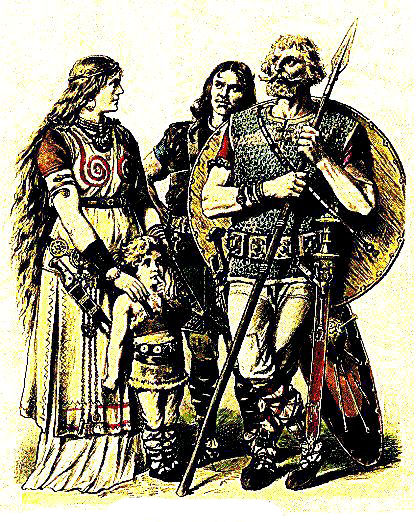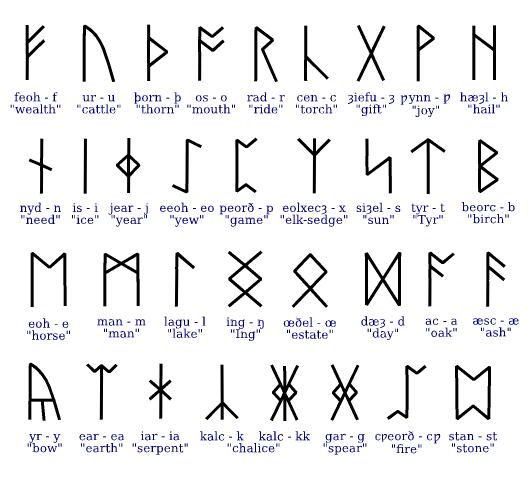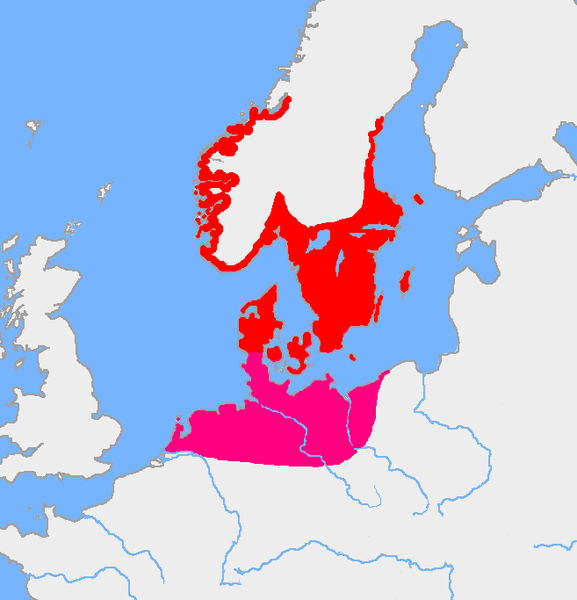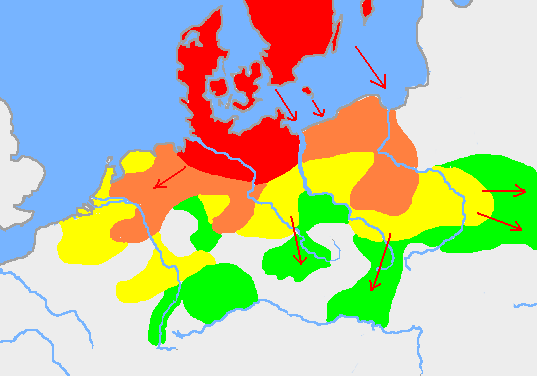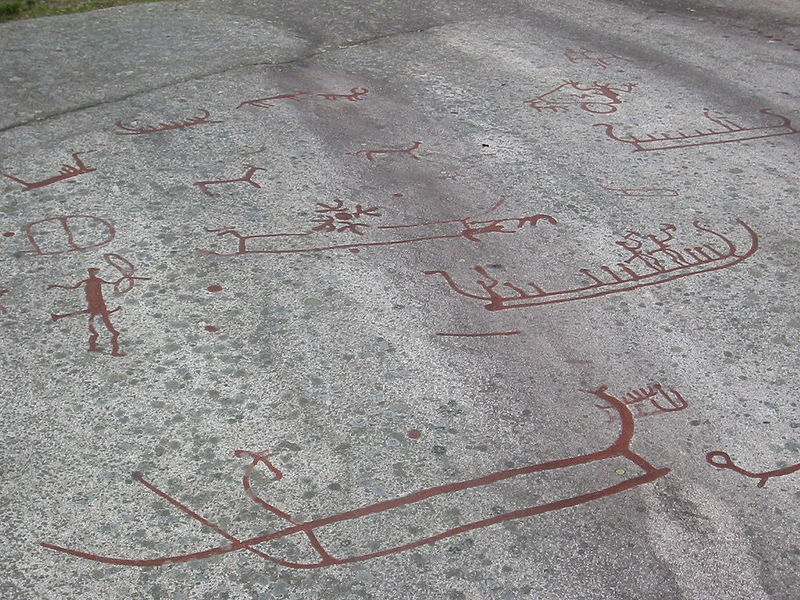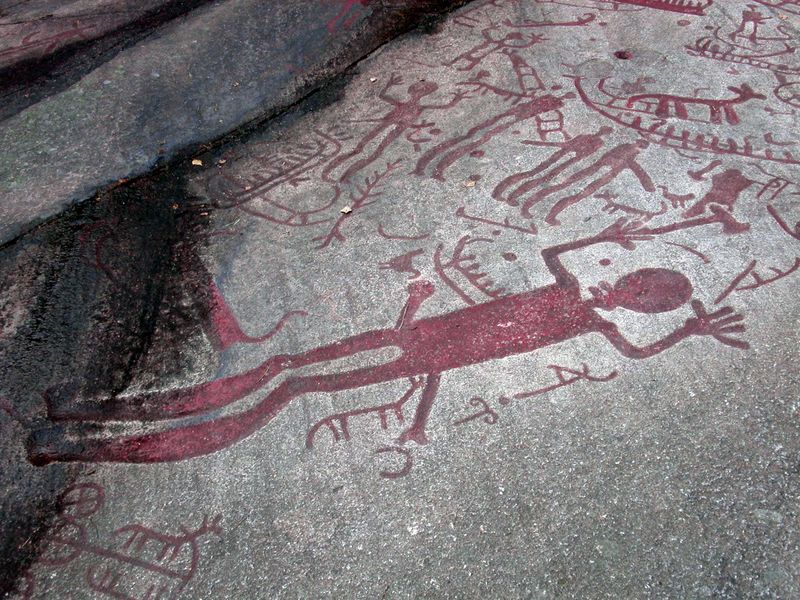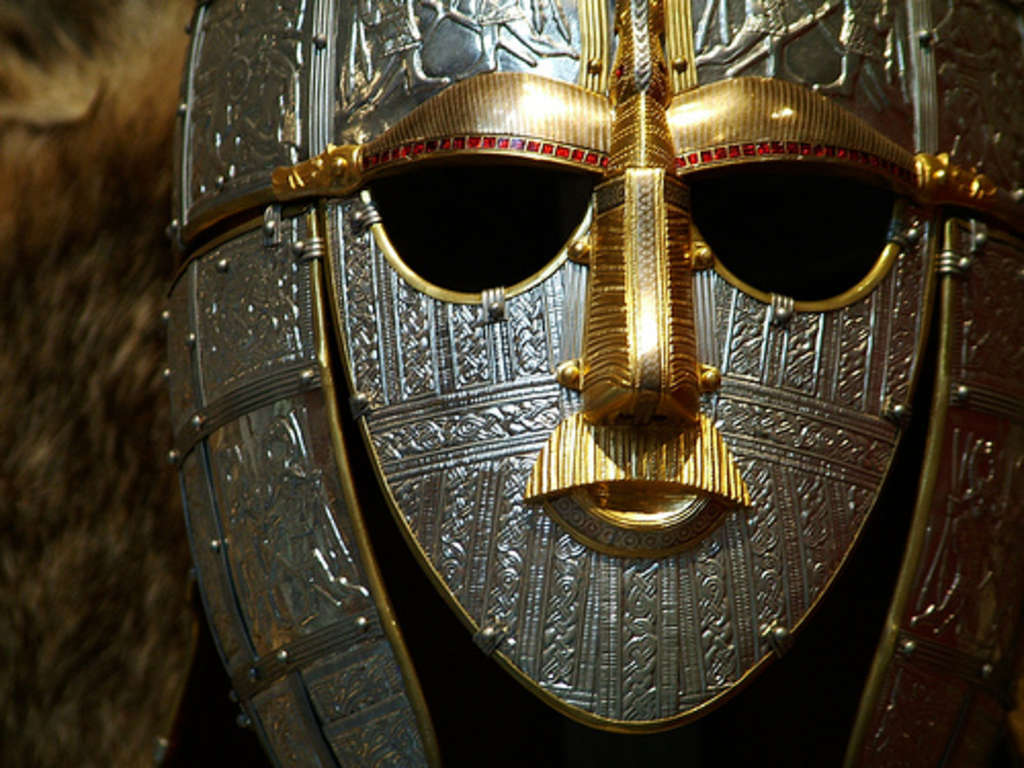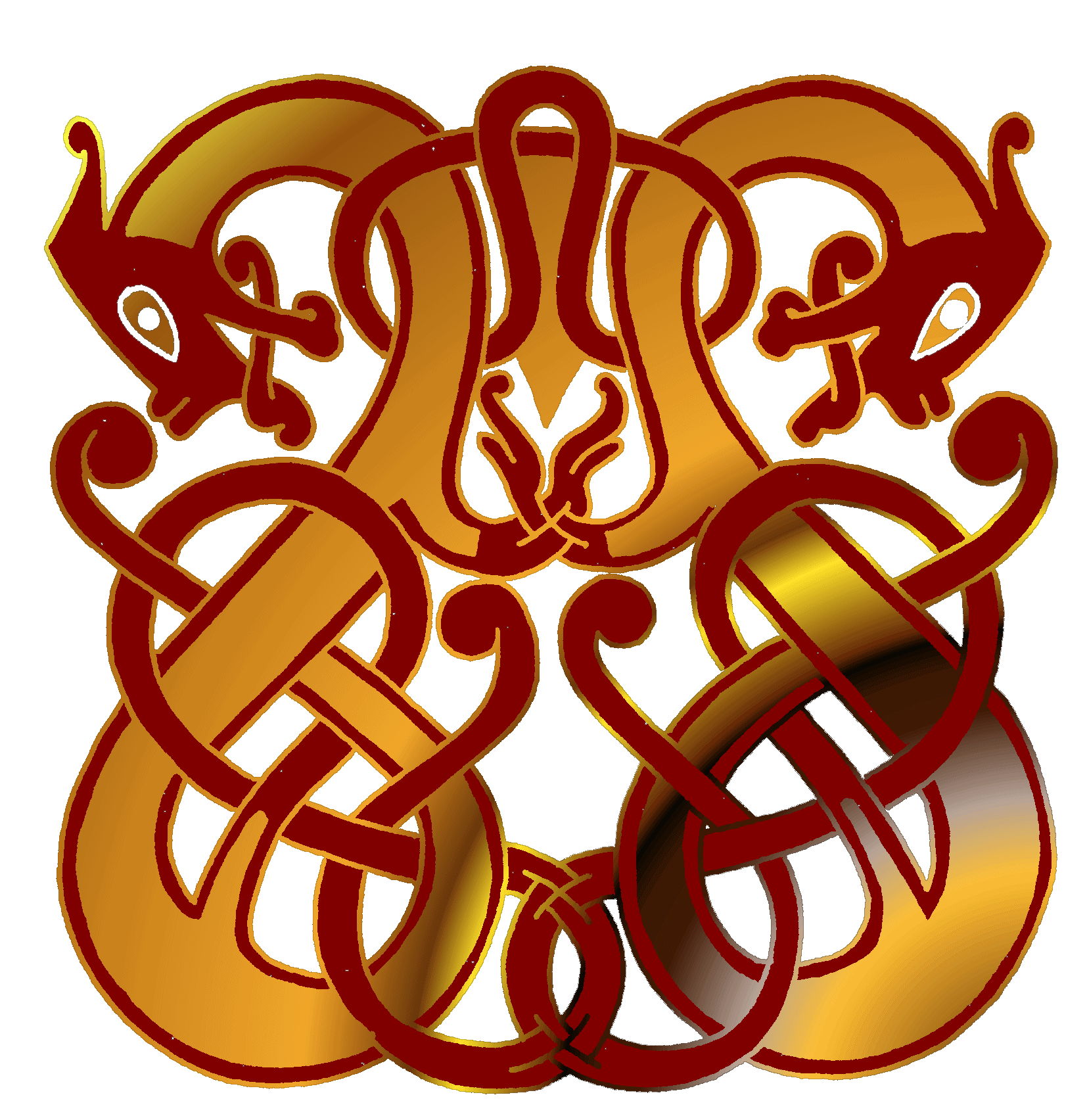Samhain Month (Mi Na Samhna)
Samhain the Celtic harvest and opening of the gates to another world.

Gaston Bussiere, Beatrix Elvery and unknown. Compilation image and photo by Hroðberht.
Some Legends:
Samhain is well known for the exploits of legendary Gaelic hero Fionn Mac Cumhaill and his Battle on Samhain night against the fire breathing Giant Aillen. Believed to be symbolic protection against fire. Samhain was also the second Battle of Mag Tuired in which the Tuatha DE Danaan battle the Fomor for the final time. Traditional Samhain has much to do with Ancestors, spirits, ghosts and the beings of the mounds of shadowy corners. It was a time of celebration, feasting and harvest before the coming of the dark half of the year. Sacred Bonfires would be lit across the land and Druidic prophecy foretold.
The hero Nera is said to have embarked upon a journey into the non corporeal world where he encountered Faries and the Undead. One Samhain night The Warriors of Cruachan were feasting and their King Aillil dared any man to put a wicker band around a corpses ankle that had been hung. Samhain is a night when the dead walk. Nera A warrior of Connacht was the only one brave enough to accept the challenge. As he placed the band upon the corpse it moved and asked him to give it water, Nera allowed the undead being to climb on his back and carried it to a house. The first house was in flames, the second flooded with water but the third they could enter. The corpse drank 3 cups of water, spitting the third out killing those in the house. Nera returned the corpse to the gallows only to find the hall in flames with all inside decapitated. He saw a host riding back into the Cruachan and followed them into the otherworld. Once in the mound he met one of the female Sidhe (She) who told him that it was not real but a vision of the next Samhain night if the warriors of Medb and Aillil did not destroy the Cruachan and defeat the army of the Sidhe. Nera returned to tell Queen Medb and Aillil of what he had heard and seen only to find no time had passed since he left on his quest. Nera warned the people of Cruachan before escaping with the woman Sidhe. Medb, Aillil and Fergus Mac Roich then went to destroy the Hill of Cruachan.
https://www.history.com/topics/holidays/samhain
https://www.newgrange.com/samhain.htm
Hroðberht-
Who are the Celts

The Celts are a warrior culture possibly originating in Central Europe with the Hallstatt culture of early Bronze Age (Theoretical). North western, Central and Eastern Europe had large Celtic populations that increased and decreased over time and tumult with incoming tribes from the North as well as regular battle with Rome. These warriors have left many place names, mysterious burial mounds and captured the imagination of generations with images of shining swords, Bonfires, Battle Horns and Boar crested helmets. Sit back, relax and lets take a closer look at the Celts..
AL IMAGES COLLECTED AS CREATIVE COMMONS FOR EDUCATIONAL PURPOSES.
If you are the owner of any said image and wish to have it removed please message and I will do so post haste.

Diachronic distribution of Celtic peoples, on the traditional view:
Yellow: Core Hallstatt territory, by the sixth century BC
Light Green: Maximal Celtic expansion by 275 BC
Lighter Green: Lusitanian area of Iberia where Celtic presence is uncertain
Dark Green: Areas where Celtic languages remain widely spoken today
* VIA WIKKIPEDIA.ORG

Overview of the Hallstatt and La Tène cultures.
The core Hallstatt territory (HaC, 800 BC) is shown in solid yellow.
The eventual area of Hallstatt influence (by 500 BC, HaD) in light yellow.
The core territory of the La Tène culture (450 BC) in solid green.
The eventual area of La Tène influence (by 250 BC) in light green.
The territories of some major Celtic tribes of the late La Tène period are labelled.
Legendary metallurgy:

Bronze shield boss in La Tène style found in the river Thames England. (Iron Age)

Hallstatt era (Austria) Swords/Daggers “Antenna style hilt” .

Late Bronze Age Hallstatt “C” swords.

Hochdorf “Chieftains Grave” Dagger 530BC Germany. Hallstatt culture.

Antenna Hilt Dagger. Hallstatt.

Hallstatt C Bronze Axehead.

Cult wagon. Hallstatt.

Bronze Belt Plate Hallstatt.

Celtic Helmet.

Celtic Shield.

Late Bronze Age Hallstatt Swords.

Beautifully ornamented Hallstatt Sword.

Urnfield Culture Weaponry.

Urnfield Culture.

Celtic Sword.

Urnfield Culture.
……………………………………………………………………………………………………………………………………………………..
The Ancient continental Celts were an advanced people who may have been the first to forge Iron swords and were prolific bronze age artists, goldsmiths, miners and horse men without equal north of the Alps. The spread of the Celts is debated but archaeology shows their presence in many corners of Europe either by trade or settlement.
The People:
Like their contemporary northern kin the Celts were tall, sturdy built warriors who’s reputation for fierceness was legendary. It is theorized that the Pre-Hallstatt cultures of Europe such as the Unetice Culture, Beaker Culture and Urnfield culture had direct influence on or was the ancestor of Proto-Celtic development. It is important remember that some of these ideas are factual and some are theoretical.

Celts were prolific on horse back but even more terrifying to their enemies was the Celtic Chariot:


Queen Boudica Seeking her justice.
…………………………………………………………………………………………………………………………………………………….
Celtic Jewelry:

Amber beaded necklace.
Golden Jewelry (Various eras of Celtic history)

Hallstatt Culture.
……………………………………………………………………………………………………………………………………………………..
Graves:

Urnfield Map.
Hallstatt Graves. (Drawing and Recreation)

Bell Beaker Grave (recreation) (Pre Celtic Kurgan IE people)
Newgrange Ireland. (Pre-Celtic Neolithic but had use and influenced Iron and Bronze age Celts)
Hallstatt Tumulus/Funeral Wagon.
……………………………………………………………………………………………………………………………………………………..
Language:
Celtic is a language in the Indo-European language family spoken once across Central Europe and now largely in Wales, Ireland, Britanny and Scotland.


Celtic Languges. See map above regarding distribution.
Celtic Ogham Alphabet (Tree Alphabet) (Britain)

Origin of the Ogham:
The cryptic Ogham alphabet used for Old Irish or possibly Pictish has heated debates on its origin. These arguments range from Latin, Greek, Runic and an origin in Gaul. Some stones do exists with both Runic and Ogham inscribed on them but its unclear if this would indicate influence.
>>>>>>>>>>>>>>>>>>>>>>>>>>>>>>>>>>>>>>>>>>>>>>>>>>>>>>>>>>>>>>>>>>>>>>
The Stones: Pictish.
Pictish stones with symbols and some with obvious Norse influence in the knot work.

Pictish stone with Ogham inscription.

Pictish stone but seemingly Norse influenced.
>>>>>>>>>>>>>>>>>>>>>>>>>>>>>>>>>>>>>>>>>>>>>>>>>>>>>>>>>>>>>>>>>>>>>>>
The Gods:

Tuatha Dé Danann (Irish Mythology)


Take not of Panel 2.

Lugh.
Lugus-Lugh 3 Headed God which similar to a Slavic God concept and possibly depicted on the Germanic Golden Horn of Gallehus in Denmark. The Golden horn shows what could be described as a combination of Celtic and Germanic Ideas although the horn is engraved with Runes and is of Germanic make.



Cernunnos (Gundestrup Cauldron Denmark) Again possibly referenced on the Golden Horns of Gallehus. The concept of the horned God goes back into the deepest history of modern human spirituality.

Taranis.
 Epona. Celtic Horse Goddess.
Epona. Celtic Horse Goddess.

Sucellus. (Gaul)

Brigantia. (Goddess)
Because of the detail and variety of Celtic Mythology please use these resource links for more detail on the wide ranging concepts and descriptions of Celtic cosmology.
https://en.wikipedia.org/wiki/Celtic_mythology
https://www.ancient-origins.net/human-origins-folklore/celtic-myths-creation-0072
>>>>>>>>>>>>>>>>>>>>>>>>>>>>>>>>>>>>>>>>>>>>>>>>>>>>>>>>>>>>>>>>>>>>>>>>

I hope this acts as a interesting snapshot of the history and concept of the Celts. The next historical installment will be “Who are the Norse people part 2” as the original post only barely scratched the surface.
Until next time.
Hroth-
Who are the Norse people (History/Culture post)
The Norse/Germanic people : A brief history:
The history of the Nordic people begins in Central Asia and the Russian steppe when the Indo-Europeans start migrating west into modern-day Europe. During the great migration a branch of the IE moved into present day Scandinavia and became isolated most likely due to climate disruptions. Human beings have occupied Scandinavia for at least 11000 years. It is in the forest and frozen mountains that the Nordic people get the distinct cultural/linguistic identity known as Germanic. After developing a unique culture the Germanic people begin moving south for less turbulent weather and cross the Baltic and North seas into Germany, Poland and Jutland. The migration age tribes founded the modern Nordic countries we know today like Scandinavia (Norway-Sweden-Denmark), Germany and England to name a few.
The culture of the Norse was actually already 1000 years or older when the Viking age began and a new wave of Germanic people again started crossing into Europe and Britain carrying largely the same migration age culture, legal systems, Runic codex and religious beliefs as the previous migrating tribes. Some of the identifying markers of Nordic culture is complicated knot work, exceptional metal/wood work, seafaring/boat building and design, metaphoric poetry and spoken word, grand feasting halls, ancestral worship and equal rights for women. A fact reviled by Roman authors when facing the Teutons in the Alpine regions during the migration age. I use the term Norse as a general description of the larger Germanic culture from its Dutch origin “Noors” “People from the north” because Germanic culture originates in Scandinavia/Denmark.
Runes:Glossary:
We Norsemen have an indigenous alphabet called Runes or the Elder Futhark, The header of my blog is in Anglo-Saxon Futhorc set and many variations exist as the system evolved out of the Elder Futhark. Runes were typically used for marking ownership such as Hermeric owns this knife or Olaf is buried here but many large inscriptions do exist. Each sign also has a divine meaning with immense power behind it. I have often called the Runes the language of the universe. I personally believe in the power behind the Runes. The origin of the Futhark is a mystery, theories exist but none satisfy in explaining the origin. It was largely accepted that a Mediterranean origin like Etruscan might explain it but no early finds exist near the Mediterranean, they all exist in Denmark , Northern Germany and Scandinavia. Now it is theorized that Western Germany/Denmark may be the original zone of expansion and Scandinavia being less explored has some very old inscriptions and “could” be the originator of the Runic script. Some have linked the Runes with the Hallristningar symbols carved in Neolithic Sweden/Norway which adds a new layer of age and interest to the story. The divine description in the Norse Lore is that Allfather Odin pulls them from Ginnungagap as he is hanging from Yggdrasil. A full article on Runic origins and theory will be presented in an upcoming post.
Sites of Elder Futhark discovery in Europe. Common Germanic would be the language. All German languages were mutually intelligible at this time.
Geography:

Nordic Bronze Age. 1700-500 BC
Pre-Roman Iron Age in Germania/Scandinavia 5th/4th – 1st century BC
Germanic Migration 750BC-1AD.
Red= Before 750 BC
Orange= New settlement by 500 BC
Yellow= New settlement by 250 BC
Green= New settlement by 1AD.
………………………………………………………………..
Stone Age Connection to Germanic Culture:
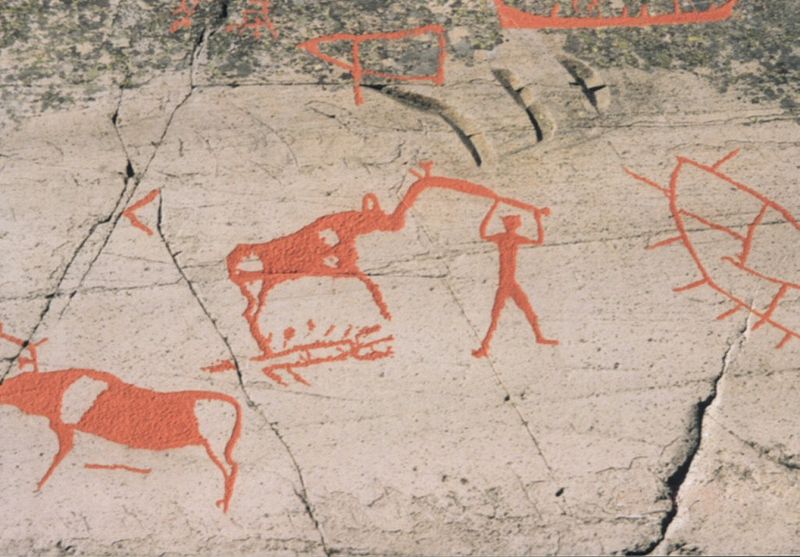 Stone Age Carving from Norway.
Stone Age Carving from Norway.
Complex Nordic Bronze age carving of obvious similar creation as the design above.
Rock carving form Norway (Over 6000 years old) Showing unique artistic elements.
Norway 1200BC
Many images on these stones dating from 6000 years ago tothe Iron age depict many traditions found in Germanic and later Viking age culture such as waging war on boats, farming/herding, fishing, ship design, beings in Germanic religion and symbols found throughout Nordic culture prehistoric to modern. When looking at these images one could understand how the Runes may have evolved out of it stylistically. The exact culture responsible is unknown in some cases but elements can be traced to later Nordic customs.
STONE CARVING PHOTO’S ARE FROM WIKIPEDIA. Copyright to respective owners.
A small gallery of images and symbols. Art of my own creation is marked.

Irminsul: Ancient German totem most likely of Yggdrasil (World tree) Symbol is associated with The Saxons and a Deity called Irmin who is most likely Odin under one of his alias/regional names. (Photo by Varus111) Reconstructed Irminsul in Hildesheim Germany.

Thor-Thunor: Nordic Thunder God. Viking age bronze statue.
Helmet replica from the Sutton-Hoo find. Adorned with glorious plates referencing Nordic customs, legendary figures and amazing detailed metal work. (Not my photo)
Stone carving designs from Gotland Sweden. Copyright Call Of Steel 2012.
Gotland Sweden Stone Carving: Pre Viking. Copyright COS 2012.
Viking age stone carving from Gotland Sweden:Viking age. Copyright COS 2012.
Anglo Saxon decoration. Copyright COS 2012.
…………………………………..
In summary I hope this post gave at least some idea of Norse culture. It is near and dear to my heart as I descend from these mighty folk and try as an artist to keep some element of the old ways alive and well into the future.
Thanks for reading and stay tuned for more Blacksmith and historical posts.
Hroðberht-













































